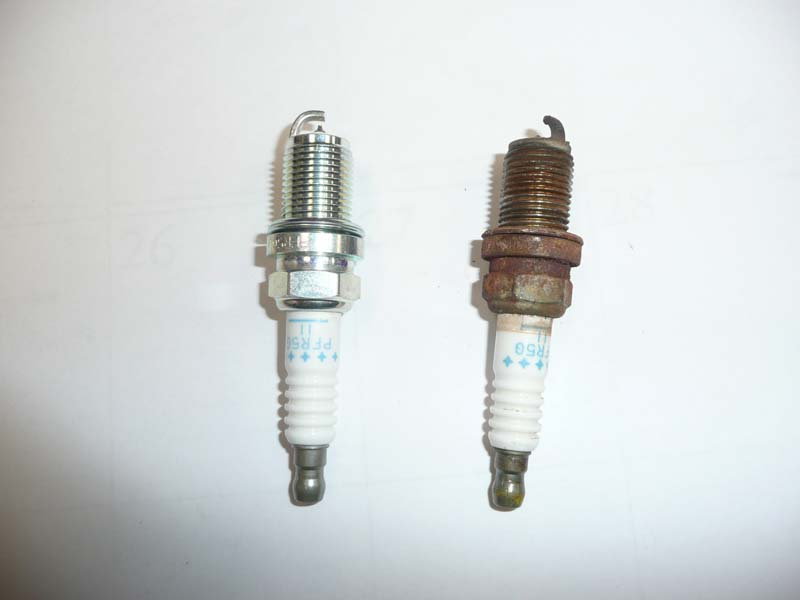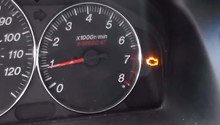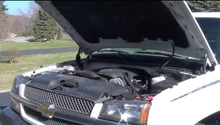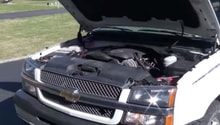Chevrolet Silverado 2007-2013: Why is My Check Engine Light On?
Part of what makes the "check engine" light (CEL) so maddening is that it doesn't tell you exactly what's wrong with your pickup. To help you narrow down your diagnostic approach, here's a look at the most common causes of the CEL in the Chevrolet Silverado 1500.
This article applies to the Chevrolet Silverado 1500 GMT900 (2007-2013).
The check engine light is the most frustrating of all the dashboard warning signals. Although the check engine light is an indication that something is wrong with your pickup, it’s not always clear exactly what that something is. Fortunately, modern diagnostic tools make it easier to find the cause of the check engine light, so you don’t waste time and money making unnecessary repairs. If you don’t already have a trouble code scanner, swing by an auto parts store and pick one up or have them run a diagnostic using their own scanning tool. Even if your Silverado is running like usual, ignoring the check engine light can result in costly repairs down the line.
It’s impossible to say exactly what’s going on inside your Silverado that’s causing the check engine light to come on, but here’s a look at some of the top causes of a check engine light and their corresponding diagnostic trouble codes (DTCs).
Issue 1 – Faulty oxygen (O2) sensor
The oxygen sensor in your truck measures the amount of un-burned oxygen in the exhaust, and monitors how much fuel is burned. Depending on the year and model of your Silverado, your truck can have up to four oxygen sensors. Unfortunately, a problem with any one of them can cause the check engine light to come on—but that’s not all. A faulty oxygen sensor can also reduce your truck’s gas mileage. The most common DTC relating to a faulty oxygen sensor is P0141.
Oxygen sensors can be considered a wear and tear item, and replacing them every 100-125,000 miles is good insurance for a healthy running engine. With oxygen sensors, you will always want to run an OEM Chevrolet part. Don't cheap out here, or you will end up with a blown engine if a cheap, knock-off sensor sends the wrong signals between the engine and the ECU.
Featured Video: How to Replace Oxygen Sensor
(Related Article - How to Replace Oxygen Sensors - ChevroletForum.com)
Issue 2 – Faulty ignition coil
The ignition coil provides the high voltage needed for your truck’s ignition system to fire the spark plugs by stepping up the battery’s primary voltage from 12 volts to thousands of volts. A faulty ignition coil will typically cause the check engine light to come with accompanying symptoms like rough idling, stalling, starting problems, and reduced fuel economy. Although these coils can simply wear down over time, the number one cause of faulty ignition coils is voltage overload caused by bad spark plugs or plug wires.
If your scanner shows the P0351 code, begin your troubleshooting with the ignition coil. To troubleshoot, make a note of which cylinder appears to be misfiring. Then swap that coil for another one on the vehicle. By swapping the coils, you can see if the issue goes away or if it follows the coil, which would indicate that the coil is bad and needs to be replaced.
Featured Video: How to Replace Ignition Coil
Issue 3 – Worn out spark plugs
Spark plugs are the catalyst for combustion in the engine. When a spark plug fails (newer ones can last up to 100,000 miles), the engine will not run as efficiently and the check engine light will come on as a result. P0304 and P0351 are common DTCs associated with faulty spark plugs, but you will know if you need to change the spark plugs if you notice any of the accompanying signs, including rough idle, engine surging, lack of acceleration, and high fuel consumption.

Issue 4 – Loose gas cap
Believe it or not, but sometimes the answer to your check engine light woes might be as simple as tightening the gas cap. A loose gas cap allows vapors to leak out of the fuel system, which can trigger an alarm in your truck’s on-board diagnostic computer and cause the check engine light to come on. If you see either P0440 or P0455 on the scanner, chances are good that you either forgot to put the gas cap back on at the fueling station, or your gas cap is cracked and needs to be replaced.

Related Discussions
- Chevy Silverado CEL Discussion - ChevroletForum.com
- Silverado Error Code P1516 - ChevroletForum.com
- 2008 Silverado Big Problems - ChevroletForum.com
- Engine Power Reduced Light - ChevroletForum.com
- Check Engine Light - ChevroletForum.com






